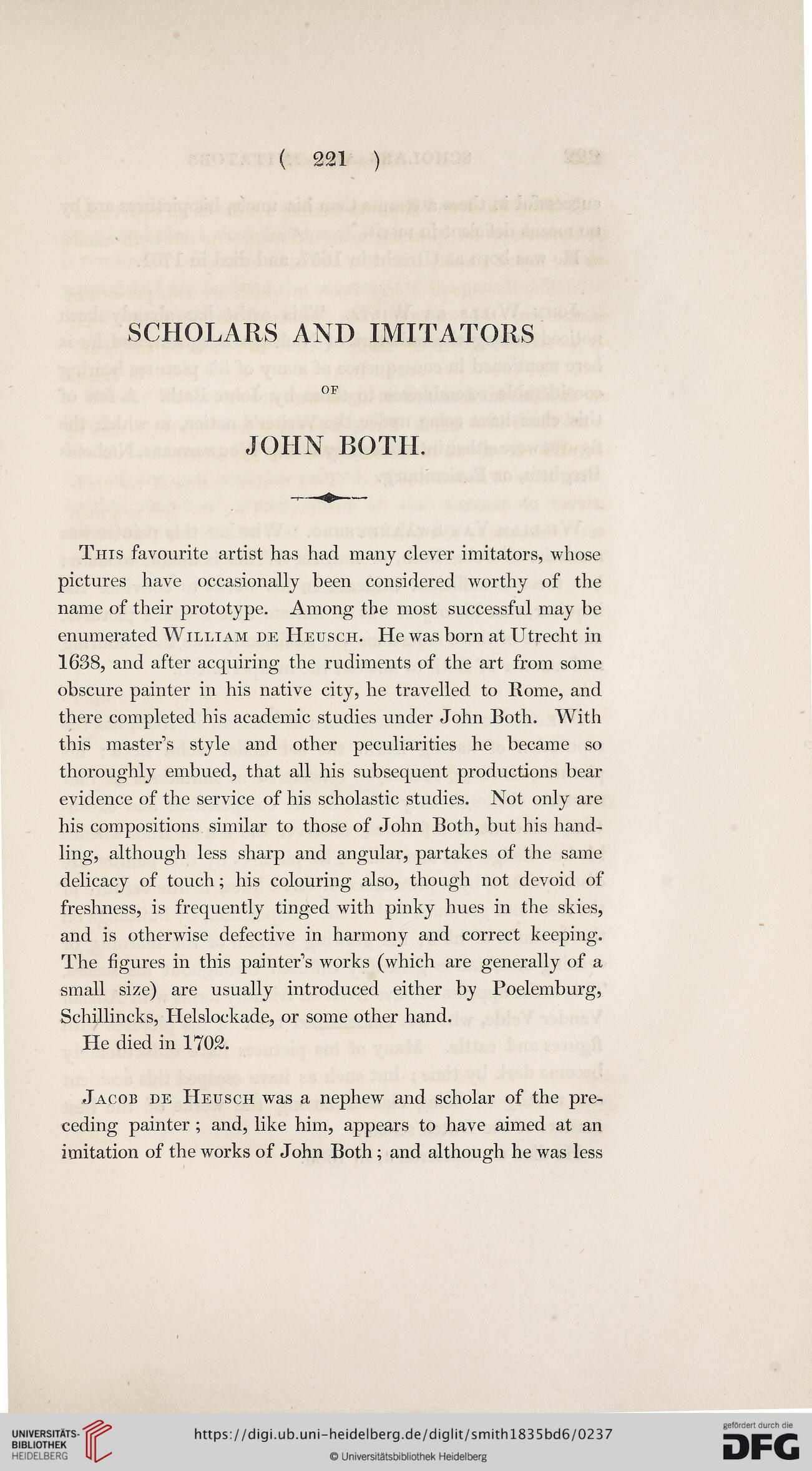( 221 )
SCHOLARS AND IMITATORS
OF
JOHN BOTH.
This favourite artist has had many clever imitators, whose
pictures have occasionally been considered worthy of the
name of their prototype. Among the most successful may be
enumerated William de Heusch. He was born at Utrecht in
1638, and after acquiring the rudiments of the art from some
obscure painter in his native city, he travelled to Rome, and
there completed his academic studies under John Both. With
this master’s style and other peculiarities he became so
thoroughly embued, that all his subsequent productions bear
evidence of the service of his scholastic studies. Not only are
his compositions similar to those of John Both, but his hand-
ling, although less sharp and angular, partakes of the same
delicacy of touch; his colouring also, though not devoid of
freshness, is frequently tinged with pinky hues in the skies,
and is otherwise defective in harmony and correct keeping.
The figures in this painter’s works (which are generally of a
small size) are usually introduced either by Poelemburg,
Schillincks, Helslockade, or some other hand.
He died in 1702.
Jacob de Heusch was a nephew and scholar of the pre-
ceding painter ; and, like him, appears to have aimed at an
imitation of the works of John Both; and although he was less
SCHOLARS AND IMITATORS
OF
JOHN BOTH.
This favourite artist has had many clever imitators, whose
pictures have occasionally been considered worthy of the
name of their prototype. Among the most successful may be
enumerated William de Heusch. He was born at Utrecht in
1638, and after acquiring the rudiments of the art from some
obscure painter in his native city, he travelled to Rome, and
there completed his academic studies under John Both. With
this master’s style and other peculiarities he became so
thoroughly embued, that all his subsequent productions bear
evidence of the service of his scholastic studies. Not only are
his compositions similar to those of John Both, but his hand-
ling, although less sharp and angular, partakes of the same
delicacy of touch; his colouring also, though not devoid of
freshness, is frequently tinged with pinky hues in the skies,
and is otherwise defective in harmony and correct keeping.
The figures in this painter’s works (which are generally of a
small size) are usually introduced either by Poelemburg,
Schillincks, Helslockade, or some other hand.
He died in 1702.
Jacob de Heusch was a nephew and scholar of the pre-
ceding painter ; and, like him, appears to have aimed at an
imitation of the works of John Both; and although he was less




